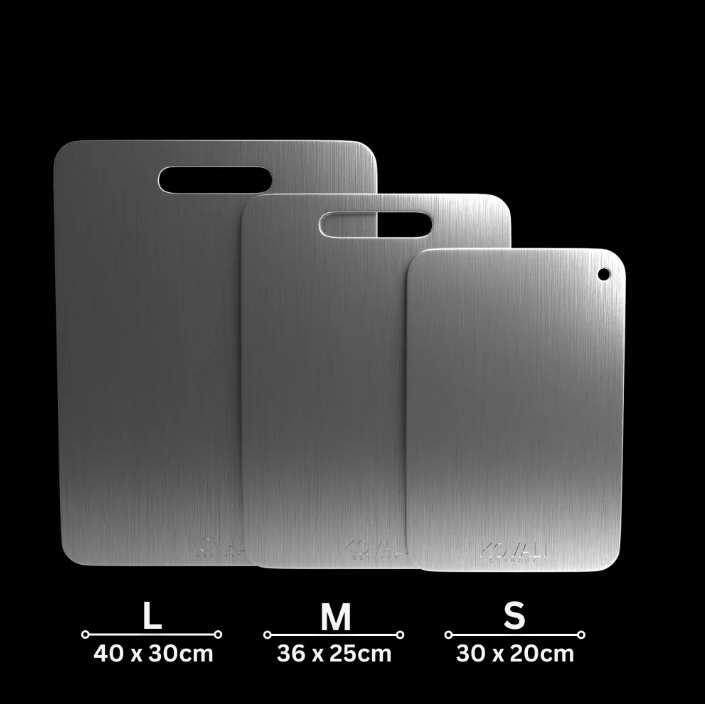Are you looking for a new cutting board? Maybe you've heard about titanium cutting boards and are wondering if they are worth the money. It's a new idea for the kitchen, and people have a lot of questions. We're here to give you the simple truth about this modern kitchen tool.
We will look at the good things and the bad things. We will also see how titanium compares to the old favorites: wood and plastic. By the end, you will know if a titanium board is the right choice for your home, no matter if you live in New York, London, Dubai, or Singapore.

Titanium is a strong, light metal. It's used in airplanes and medical tools. When it comes to cutting boards, titanium offers some big benefits that wood and plastic just can't match.
Super Clean: Titanium is non-porous. This means it does not soak up water, food juices, or smells. It's very hygienic and easy to keep clean.
Lasts Forever: It won't crack, warp, or stain. A titanium board can last much longer than a wooden or plastic one.
Easy to Wash: You can put it in the dishwasher without any problems. No need for special oils or hand-washing.
Lightweight: For a metal, titanium is surprisingly light, making it easy to move around the kitchen.
The Noise: Cutting on metal can be loud. It makes a sharp, clanking sound that some people don't like.
Knife Care: This is the biggest question. While titanium is softer than steel, some people worry it can still dull knives faster than wood or soft plastic. You might need to sharpen your knives more often.
The Price: Titanium boards are usually more expensive than other types.
Slippery Surface: The smooth metal surface can sometimes be a bit slippery for food, so you need to be careful.
When you buy a cutting board, you are choosing between three main things: hygiene, knife safety, and maintenance. Here is a simple table to help you compare the materials.
| Feature | Titanium | Wood | Plastic |
|---|---|---|---|
| Hygiene (Bacteria) | Excellent (Non-porous, very easy to clean) | Good (Natural properties, but needs oiling) | Fair (Can hold bacteria in deep cuts) |
| Knife Edge | Okay (Softer than steel, but harder than wood) | Best (Very gentle on knives) | Good (If soft plastic) |
| Durability | Excellent (Will not warp or crack) | Good (Needs care, can warp) | Fair (Gets deep cuts quickly) |
| Cleaning | Easiest (Dishwasher safe) | Hard (Hand-wash only, needs oil) | Easy (Dishwasher safe) |
If you hate the idea of bacteria hiding in your cutting board, or if you want a board that you can just throw in the dishwasher and forget about, then a titanium cutting board is a great choice. It is the best for hygiene and durability.
However, if you are a professional chef who uses very expensive knives and you worry about sharpening them often, you might still prefer a soft wood board. For most home cooks in places like Toronto, Sydney, or Copenhagen, the benefits of a clean, long-lasting titanium board are hard to ignore.
Many people who buy a titanium board use it for things like cutting meat, fish, or strong-smelling foods (like garlic and onions). They keep their wood board for bread and vegetables. This way, you get the best of both worlds!
If you are ready to make the switch and try a titanium board, it's important to choose a reliable factory that uses pure, food-safe titanium. Look for reviews and check the details of the material.
We believe in making the best quality titanium products for your kitchen. If you have any questions about our materials, sizes, or how titanium can change the way you cook, please reach out to us.
Thank you for reading our titanium cutting board review and guide. We hope this simple information helps you make the best choice for your kitchen!